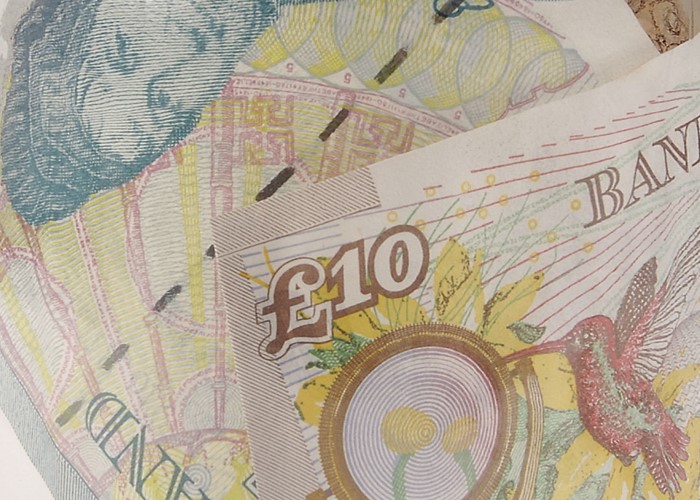The best possible place for your savings

Where can your savings work hardest, while being completely safe? Bizarrely, the answer isn't in any kind of savings account at all...
This article was first sent to readers as a '360 degrees' email.
At the beginning of October 2008, the Bank of England's base rate stood at 5%. However, after six cuts in a row, the base rate tumbled to 0.5% in March, where the Bank's Monetary Policy Committee left it at this month's meeting.
Given that the base rate has fallen by nine-tenths (90%) or 4.5 percentage points, it comes as no surprise that the interest rates paid by savings accounts have plummeted. Seven months ago, it was quite easy for your spare cash to earn around 5% a year before tax. Today, according to lovemoney partner Moneyfacts, the average instant-access savings account pays just 0.64% a year before tax. Even worse, one in three instant-access accounts pays a pathetic 0.1% AER!
Three steps to higher savings rates
As savings rates have plunged, savers have been forced to look for ways to boost the returns earned by cash. Some have opted for fixed-rate bonds, others have turned to regular-savings accounts, which pay market-beating rates of interest. These can be as high as 6% AER -- or even 8% AER if you transfer your current account to your new provider.
However, you can't deposit a lump sum into these accounts. Instead, you make twelve consecutive monthly payments of a fixed sum of, say, £20 to £250.
Another option is to stash your cash in a tax-free savings account known as a cash ISA (Individual Savings Account). A cash ISA pays tax-free interest, which is more valuable to taxpayers, especially higher-rate (40%) taxpayers. Then again, you can only deposit a maximum of £3,600 per tax year into a cash ISA (so that's £7,200 for a couple), which is not enough for well-heeled savers.
Use your savings to dynamite debts
In my view, the best place for your cash pot isn't any kind of savings account at all. That's because you can earn rates of 10% to 30% a year by being sneaky with your savings. However, this only works if you have non-mortgage debts on which you're paying interest.
Although my idea is simple -- use your savings to pay off expensive debts -- millions of people are reluctant to surrender their savings in this way. Yet total consumer credit (personal debt excluding mortgages) stood at £232 billion at the end of February, or almost £9,300 per household. Almost all of this debt is interest-bearing, so it would be a fine idea to pay it off.
Of course, one problem with my argument is that the people who have most of the debt have little or no savings, and those who have lots of savings often have little or no debts. Nevertheless, I know that millions of us have both savings and debts, when the best thing to do would be to use the former to repay the latter.
Make yourself better off today
That said, let me give you an example to show you what I mean. Let's say that you have £3,000 on a credit card which charges interest at 1.5% a month. Although this doesn't sound excessive, it compounds up to 19.56% APR over the course of a year. Thus, this £3,000 debt costs you almost £587 in interest alone each year.
Now let's also assume that you have a matching £3,000 in a savings account which pays 0.5% a year before tax. Your savings interest will be a mere £15 before tax which, for most people, comes to £12 after tax (and £9 for higher-rate taxpayers).
Therefore, while your savings are earning you a tiny £1 a month, you're paying almost £49 a month in interest. In other words, by using your £3,000 of savings to pay off your £3,000 credit-card bill, you would be £48 a month better off. So, by cancelling out your debt with your savings, you have no savings and no debt, but can now afford to save an extra £48 a month. Thus, you're better off to the tune of almost £600 a year.
Shoot your savings at your most expensive debt
To get the maximum return from this strategy, you should direct your savings towards your most expensive debts first. Usually, they will follow this order (from most expensive to least expensive):
- 1. Unapproved overdrafts (yearly rates of 20% to 30%, plus extortionate fees);
- 2. Store cards (rates can exceed 30% a year, as I warned last week);
- 3. Credit cards (the typical rate for purchases is around 17% a year, and 25% for cash withdrawals);
- 4. Authorised overdrafts (yearly rates of 10% to 20% are common); and
- 5. Personal loans (yearly rates of 7% to 15%).
So, if you have both savings and interest-bearing non-mortgage debts, then you're probably making a big mistake. Although having a cash cushion may make you feel better off, the truth is that this is nothing but an illusion. After all, with £3,000 of debt and £3,000 of savings, your net wealth is zero, regardless of what your brain tells you otherwise!
As a result, it makes perfect mathematical and financial sense to clear your debts with your savings. By ditching your debts, you will generate massively higher returns than you could ever earn from sticking with your savings. In time, this will make you richer all round.
More: Why we're all starting to save | Why some savings accounts make me mad
Comments
Be the first to comment
Do you want to comment on this article? You need to be signed in for this feature